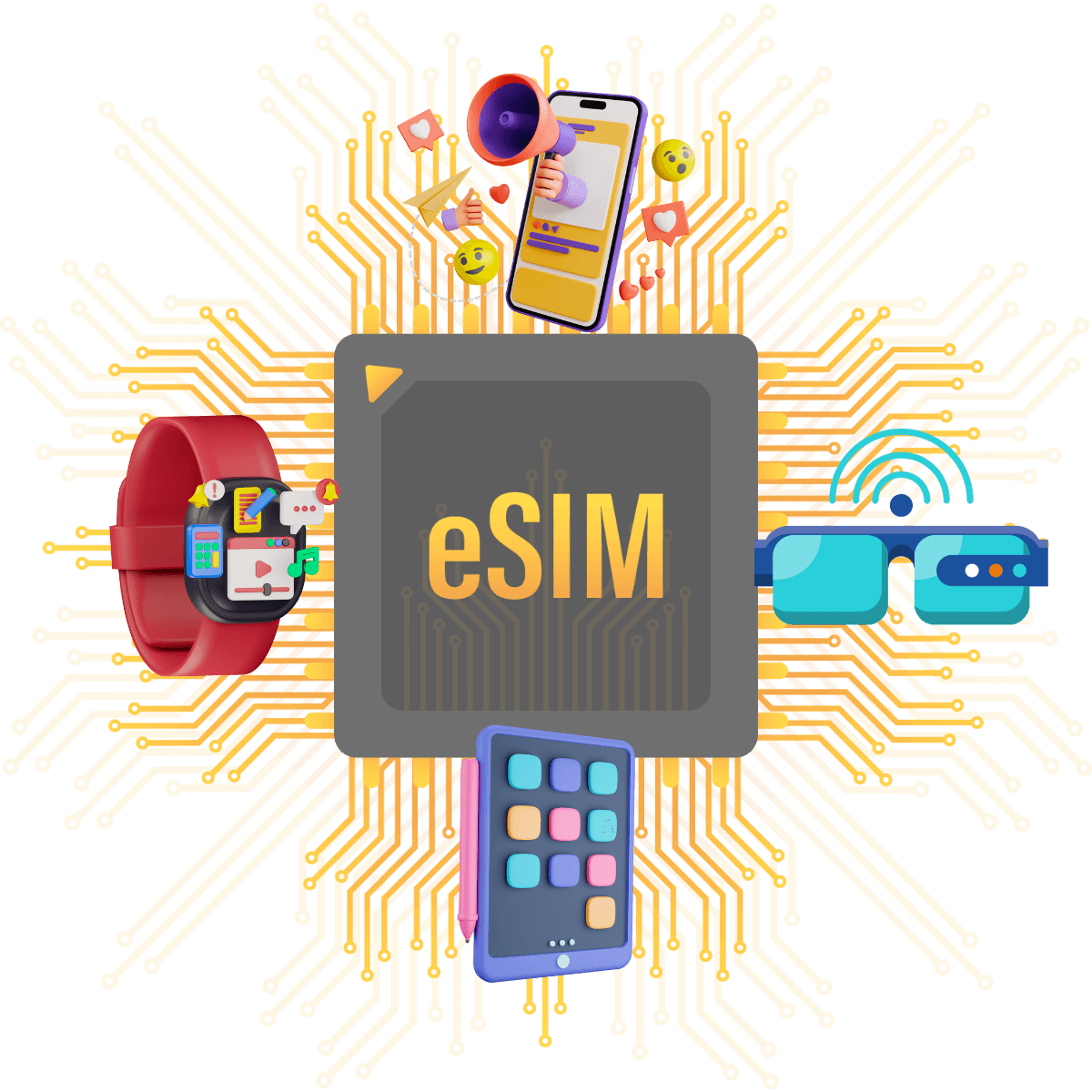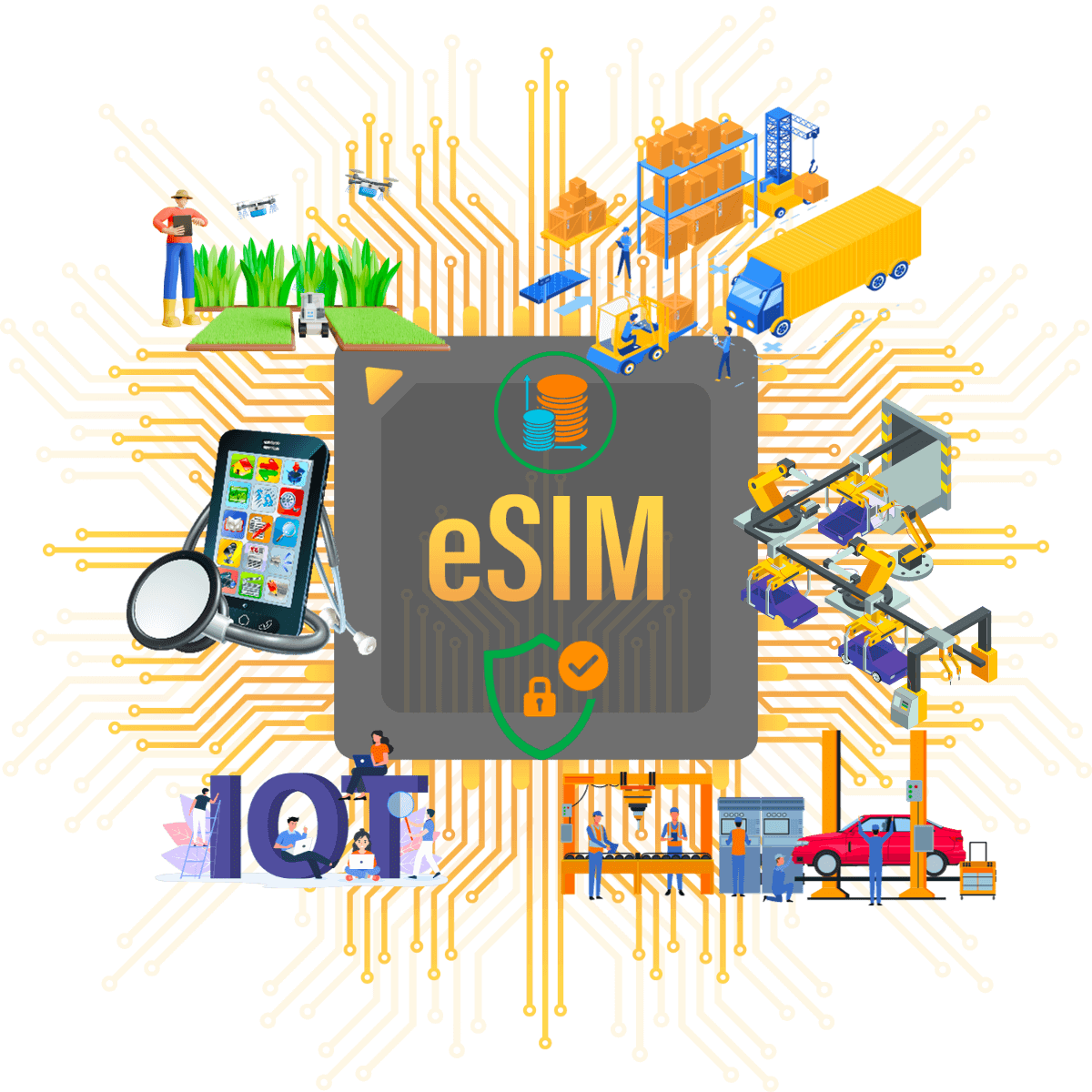
Introduction
Introducing embedded SIM cards (eSIM) into the ever-changing connectivity environment has brought about substantial improvements, responding to the different needs of customers and machines. As we delve deeper into the complexities of this technology, it’s critical to grasp the distinctions between Consumer eSIM and Machine-to-Machine (M2M) eSIM, which serve different functions in the digital domain.
If you prefer to grasp some fundamentals before diving into this blog, click here to access the previous blogs and gain a basic understanding. This not only provides you with the foundational knowledge of the topic but also ensures a seamless transition as you continue reading.

Consumer eSIM: Unleashing Flexibility for Individuals
Consumer eSIM, also known as embedded SIM or eUICC (embedded Universal Integrated Circuit Card), has transformed how people connect their devices. Unlike regular SIM cards, the eSIM is included in the device during manufacturing, removing the need for physical cards.
1. Device Flexibility:
Smartphones and Wearables: Consumer eSIMs can be found in smartphones, smartwatches, and other wearable devices. They let consumers move between mobile carriers without needing a real SIM card, giving them unrivalled flexibility.
2. Easy Activation and Management:
Remote Activation: Customers can remotely activate their eSIMs via a QR code or a smartphone app, speeding up the onboarding process.
Multi-device Management: Individuals can manage several devices under a single subscription, making it easy for consumers who own several devices.
3. Global Roaming:
Seamless Travel Connectivity: Consumer eSIMs are designed to facilitate hassle-free global roaming. Users can switch to local carriers without swapping physical SIM cards, ensuring constant connectivity during travel.
M2M eSIM: The Backbone of IoT Connectivity
M2M eSIM, on the other hand, is tailored for the world of machines and the Internet of Things (IoT). Its purpose extends beyond individual devices, serving as a linchpin for communication among many interconnected devices.
1. Scalable Connectivity:
Connected Devices: M2M eSIMs connect various machines, sensors, and devices in healthcare, agriculture, logistics, and manufacturing sectors.
Scalability: These eSIMs enable the seamless scalability of IoT networks , supporting the growing demand for interconnected devices.
2. Enhanced Security:
Integrated Security Protocols: M2M eSIMs incorporate robust security protocols, safeguarding sensitive data transmitted between devices. This is particularly crucial in sectors where data integrity and privacy are paramount.
3. Long-Term Durability:
Remote Maintenance: M2M eSIMs are designed for devices that may be challenging to access physically. They allow for remote management, updates, and troubleshooting, ensuring longevity and reliability in the field.

Conclusion
In conclusion, while consumer eSIM and M2M eSIM share the commonality of being embedded, they serve distinct purposes in the digital ecosystem. Consumer eSIM caters to the dynamic needs of individuals, offering flexibility and convenience in managing personal devices. On the other hand, M2M eSIM lays the foundation for the seamless connectivity of machines, playing a pivotal role in expanding the Internet of Things.
As our world becomes increasingly interconnected, understanding the nuances between these two types of eSIMs is crucial for businesses, manufacturers, and consumers. The future undoubtedly holds further innovations in eSIM technology, shaping how we connect and communicate in an ever-expanding digital landscape.
Next blog in this series - eSIM Use Cases and Industry Adoption: Real-World Applications Across Consumer and IoT Markets.

